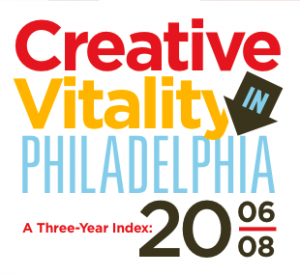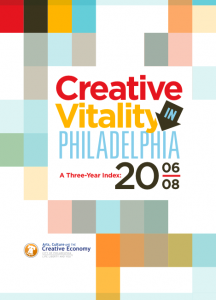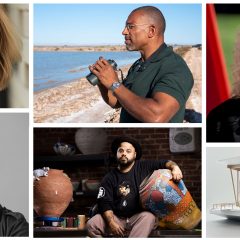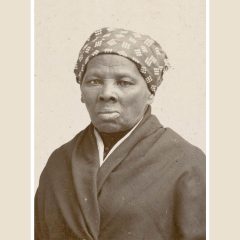The house was packed as Mayor Nutter kicked-off a press conference on Monday announcing the findings of a Three-Year index of Creative Vitality in Philadelphia.

The results of the the report show that Philadelphia’s Creative Vitality Index (CVI) score is 70% stronger than the national benchmark, and our CVI growth from 2006 to 2008 ranks among the top 5 in the nation. Additionally, our Nonprofit Arts Organization revenue is 5 times the national benchmark.
The Creative Vitality Index is a comparison of publicly available data analyzed against a national benchmark. The study looked at ‘Occupational Employment’ and ‘Community Participation’ in the creative economy. For the purposes of the study, the creative economy is defined as:
“For-profit and nonprofit arts-related creative industries such as visual and performing arts, graphic design, music, fashion, public relations, and architecture.”
– 2010 Creative Vitality in Philadelphia, page 2
This study was commissioned by the Mayor’s Office of the Arts, Culture and Creative Economy from the Western States Art Federation (WESTAF) who developed the index. The Mayor’s Office was formed in Philadelphia in 2008 to improve access to the arts, and is supported by a full-time staff and an advisory committee comprised of 15 creative industry leaders. The Creative Vitality project was managed by Moria Baylson and the report was designed by Smyrski Creative.
The full report is available online as a PDF download.

What does this mean for Philadelphia’s artists? It means that the city is formalizing its support of the creative sector. They are taking notice of the critical mass of cultural activity, quantifying it, investing in research around it, and looking at ways to help support its growth. There were two key mentions from Gary Steuer, Philadelphia’s Chief Cultural Officer, of how the city can use the report to inform the development of services for artists: one is a construction assistance program and the second was a tax benefit for independent workers in the creative economy. He invited the community to participate in a ‘Town Hall’ on Thursday, January 27th at the Philadelphia Center for Architecture.
Steuer acknowledged that a key weaknesses in the report is the index measuring employment – this is clearly not an accurate representation of the cultural economy in Philadelphia. Due to the availability and nature of the data used for the index, the report does not capture employment data from anyone who is self employed or an independent artist. The employment data in the index is only representative of employers who hire full-time, salaried positions in the creative economy.
Although this is simply a research report, it is also an impressive initiative which highlights the strength of the cultural economy in Philadelphia. It’s release comes just weeks before the Knight Foundation will announce the winners of the first round Knights Arts Challenge which aims to encourage businesses to invest in the creative sector by providing matching funding.
Reading through the report one might find a renewed assurance in the viability of our region’s cultural economy. The report gives a ‘business’ dress to the dialogue we’re having about the industry of creativity, selling its history in the region, while backing this narrative with analysis of hard data. It has the effect of educating the creative community about how to position itself, and how make a business case for itself.
While this might seem sterile and corporate to those outside of the business world, this way of talking about the creative economy has the result of making it accessible to a wider audience. There is a website where participants in Philadelphia’s creative economy can submit their own stories as case studies, and Steuer’s office now has its own Twitter account: you can follow them @creativePHL.









